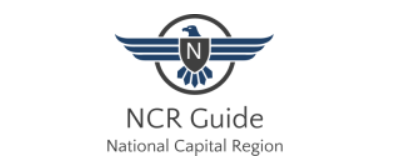Delhi, the vibrant heart of India, is a sprawling metropolis that offers a multitude of experiences, and getting around this dynamic city requires an understanding of its diverse transportation options. In this comprehensive guide, we’ll take you on a journey through the various modes of transportation available in Delhi, helping you navigate the bustling streets, metro lines, buses, taxis, and ride-sharing services, all while providing valuable traffic and travel tips.
Table of Contents
Public Transport
Delhi Metro: The Lifeline of the City
One of the most efficient and popular modes of public transportation in Delhi is the Delhi Metro. Opened in 2002, the metro network has expanded over the years, becoming the lifeline of the city.
Key Information:
- Lines and Routes: The Delhi Metro comprises multiple lines that connect different parts of the city and extend into the National Capital Region (NCR). Key lines include the Red Line, Blue Line, Yellow Line, and Airport Express Line, among others.
- Operating Hours: The metro typically operates from 6:00 AM to 11:00 PM, with varying timings on different lines.
- Fares: The fare structure is based on the distance traveled, with the minimum fare being ₹10 and a maximum of ₹60. Various travel cards and concessions are available, including a daily pass for unlimited travel.
- Accessibility: The Delhi Metro is wheelchair-accessible, and stations are equipped with escalators and elevators.
Pro Tip: To avoid the morning and evening rush hours, plan your metro travel during non-peak hours.
DTC Buses: Extensive Bus Network
The Delhi Transport Corporation (DTC) operates an extensive network of buses that crisscross the city, providing a cost-effective way to travel.
Key Information:
- Routes: DTC buses cover a vast expanse of Delhi, connecting even the remotest parts of the city.
- Types of Buses: The fleet includes standard buses, low-floor buses, and air-conditioned buses.
- Fares: Bus fares are distance-based, and a variety of passes and travel cards are available for regular commuters. The minimum fare for non-AC buses is ₹5, while it’s ₹10 for AC buses.
- Route Types: DTC offers several types of routes, including standard routes (red buses), Mudrika or Ring routes (green buses), and Bahri Mudrika or Outer Ring roads (orange buses), making it easy to identify routes based on their colors.
Pro Tip: Download the “Delhi Transport” app to check bus routes, real-time locations, and estimated arrival times.
Taxis and Ride-Sharing Services
Taxis: A Convenient Choice
Taxis in Delhi are a convenient mode of transportation, especially for those who prefer door-to-door service and air-conditioned comfort. The city offers various taxi options:
Key Information:
- Types of Taxis: Delhi has a range of taxis, including traditional black and yellow taxis, radio taxis, and app-based taxis like Ola and Uber.
- Fares: Taxi fares are metered, with different rates for daytime and nighttime travel. The flag-down fare for non-AC taxis is ₹25 for the first kilometer and ₹14 for each additional kilometer. For AC taxis, it’s ₹25 for the first kilometer and ₹16 for each additional kilometer. App-based services usually provide upfront pricing.
- Popular Taxi Services: Some popular radio taxi services in Delhi include Meru Cabs, Mega Cabs, and Easy Cabs, while app-based services include Ola and Uber.
Pro Tip: Always ensure the taxi driver starts the meter at the beginning of your journey. For safety, consider using app-based services that provide driver details and GPS tracking.
Ride-Sharing Services: Convenience at Your Fingertips
App-based ride-sharing services like Ola and Uber have become increasingly popular in Delhi. They offer a convenient and cost-effective way to get around the city.
Key Information:
- Booking: You can book a ride using the respective apps, which provide details about the driver and the estimated fare. Both Ola and Uber also offer shared ride options for a more budget-friendly choice.
- Options: These services offer various options, including economical, premium, and shared rides.
- Payment: Payments can be made through the app using various methods, including digital wallets, credit/debit cards, and cash. Ola even offers a feature for in-cab entertainment, making your ride more enjoyable.
Pro Tip: Consider using ride-sharing services for short to medium distances within the city, as they offer competitive rates and ease of booking.
Traffic and Travel Tips
Navigating Delhi’s Traffic
Delhi’s traffic can be a challenge, especially during peak hours. Here are some tips to navigate it smoothly:
- Peak Hours: Delhi experiences heavy traffic during morning and evening rush hours, typically from 8:00 AM to 10:00 AM and 5:00 PM to 7:00 PM. Plan your travel accordingly to avoid these peak times.
- Odd-Even Rule: Delhi has implemented an odd-even rule for private vehicles during certain periods to reduce pollution. Make sure to check if it’s in effect during your visit.
- Traffic Apps: Utilize navigation apps like Google Maps, which provide real-time traffic updates and alternative routes. Waze is another app that’s popular for its traffic information.
- Metro: Consider using the Delhi Metro during peak traffic hours to avoid road congestion and reach your destination faster.
Safety Precautions
When traveling in Delhi, it’s essential to take safety precautions:
- Use Recognized Services: When taking taxis or ride-sharing services, ensure you use reputable providers, and consider booking through their official apps for added security.
- Secure Valuables: Keep your belongings secure and avoid displaying valuable items in public.
- Emergency Numbers: Save essential contact numbers, including local police (Dial 100) and medical services (Dial 102 or visit the nearest hospital) in your phone.
Conclusion
Navigating Delhi’s transportation options can be a rewarding experience, allowing you to explore the city’s rich heritage and vibrant culture with ease. Whether you choose the efficient Delhi Metro, the extensive bus network, taxis, or ride-sharing services, Delhi’s diverse transportation landscape ensures that you can get to your destination comfortably. By following traffic and travel tips and taking necessary safety precautions, your journey through the capital of India will be a memorable one.
FAQs
Q1: What’s the best mode of public transport for tourists in Delhi? Answer: For tourists, the Delhi Metro is often the best choice. It’s efficient, affordable, and covers many popular tourist destinations. Consider purchasing a tourist card for unlimited travel during your stay.
Q2: Are Delhi’s buses safe for tourists? Answer: DTC buses are generally safe for tourists. However, it’s advisable to keep an eye on your belongings, especially during crowded hours, and avoid traveling on the footboard of a moving bus.
Q3: Are taxis readily available in Delhi, and can I trust them? Answer: Taxis are readily available in Delhi, but it’s crucial to choose authorized taxi services or use reputable app-based services like Ola and Uber for transparency and safety.
Q4: What’s the best time to avoid traffic in Delhi? Answer: To avoid heavy traffic, plan your travel outside peak hours, which typically fall between 8:00 AM to 10:00 AM and 5:00 PM to 7:00 PM.
Q5: Is the Delhi Metro accessible for people with disabilities? Answer: Yes, the Delhi Metro is accessible, with stations equipped with elevators and ramps. It’s one of the most accessible modes of public transport in the city.
Q6: How does the odd-even rule work in Delhi, and when is it usually enforced? Answer: The odd-even rule restricts private vehicles with odd and even number plates on alternate days to reduce pollution. It’s typically enforced during specific periods, so check local announcements for the schedule during your visit.
Q7: What should I do if I need to travel during Delhi’s odd-even rule period? Answer: If you need to travel during the odd-even rule, consider using public transport, carpooling, or app-based ride-sharing services, which are usually exempt from the rule.
Q8: How can I ensure my safety while using ride-sharing services in Delhi? Answer: To ensure your safety, always book rides through the official apps of services like Ola and Uber, verify the driver’s details, and share your ride status with a trusted contact. Avoid sharing personal information during the ride.
Q9: Are there designated pick-up and drop-off points for ride-sharing services at Delhi Metro stations? Answer: Yes, most Delhi Metro stations have designated areas for pick-ups and drop-offs for ride-sharing services like Ola and Uber. Check station guidelines or inquire with station staff for specific locations.
Q10: What should I do in case of an emergency or if I’m in an unfamiliar part of Delhi? Answer: In case of an emergency or if you find yourself in an unfamiliar area, dial 100 for police assistance or 102 for medical help. Be prepared by saving these numbers in your phone and sharing your location with a trusted contact.




